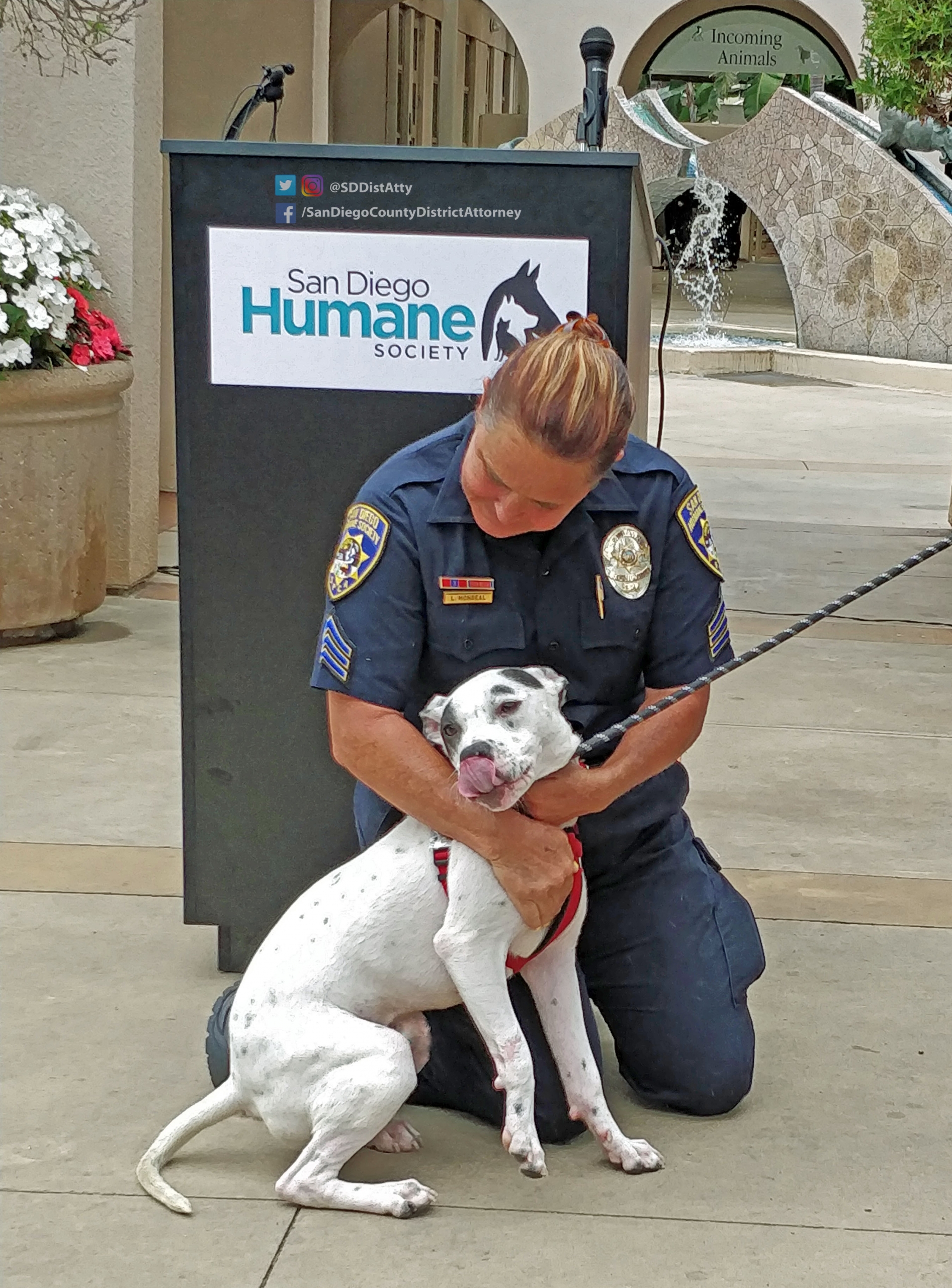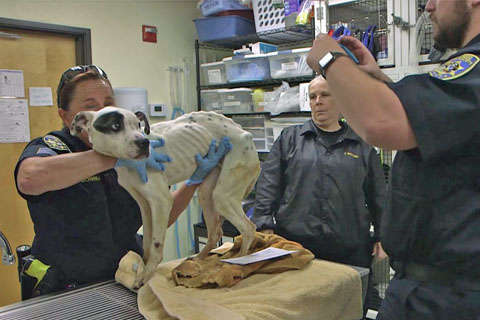How to Recognize Animal Cruelty
On March 1, a dog was found abandoned in Escondido, weighing less than 20 pounds and extremely dehydrated with low temperature; he also had pressure sores on his hips and knees.
The dog, who was named Remington, recovered thanks to the San Diego Humane Society’s veterinary team.
Because of his critical condition, this is a felony animal cruelty investigation by San Diego Humane Society’s Humane Law Enforcement, which is still looking for information that will lead to an arrest.

Remington is just one example of the animal cruelty cases that could lead to prosecution by the San Diego County District Attorney’s Animal Cruelty Unit, which was established one year ago. [TWEET THIS]
In the past year, the DA’s Animal Cruelty Unit has prosecuted 53 cases for animal cruelty; nine of those cases also have domestic violence charges, six cases have child abuse charges and two have elder abuse charges along with the animal cruelty charges.
This week, the San Diego Humane Society and District Attorney Summer Stephan commemorated the one year launch of the Animal Cruelty Unit by reminding the public to “Look out and Speak out” against animal cruelty.
[WATCH THE NEWS CONFERENCE HERE]
“Of our 53 cases 17 cases are prosecuted that have this combination of terror to the family from within that includes abuse of animals,” said District Attorney Summer Stephan. “These cases are difficult because the animals can’t speak for themselves and that’s why it’s so important that our community, our neighbors, look out and speak up.”
Animal cruelty is one of the earliest and most dramatic indicators that an individual may be developing a pattern of seeking power and control through abusing others. Children witnessing animal cruelty are significantly more at risk of adolescent or adult interpersonal violence.
[LEARN MORE ABOUT THE DA’S ANIMAL CRUELTY PROSECUTION UNIT]
Learn to recognize animal cruelty:
- Wounds on the body; patches of missing hair; extremely thin, starving animals; limping, etc.
- An owner striking or otherwise physically abusing an animal.
- Dogs who are repeatedly left alone without food and water, often chained up in a yard.
- Dogs who have been hit by cars—or are showing any of the signs listed above—and have not been taken to a veterinarian.
- Dogs who are kept outside without shelter in extreme weather conditions.
- Animals who cower in fear or act aggressively when approached by their owners.
- Flea or tick infestations.
If you ever suspect animal cruelty, please call the San Diego Humane Society at (619) 299-7012. [TWEET THIS]



